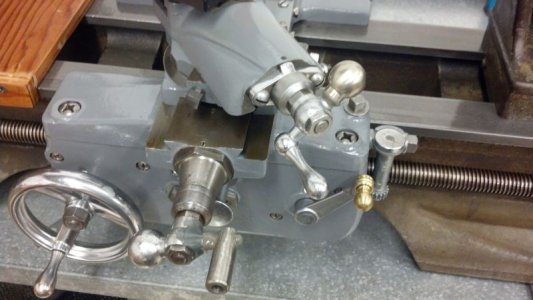OK. Worn out cross feed nuts are not uncommon. Worn out cross feed screws are often an indication of poor maintenance. Of course, as with the nut the only way to fix or improve it is replacement.
I should've taken a picture of the lathe when I had first bought it. Everything was nearly locked up solid with rust and it had more play then I'd care to mention. My tear down of the machine indicated poor maintenance also. The cross feed nut was something like .100 play. Meaning I turn the knob and it rotates .100 before I had movement across the slide and the compound was .250 give or take. My fix considering the screws where heavily worn was to set it at the most worn area and heat the nut with a O/A torch and let it reshape to the smallest part. It worked fairly well I now have less then .020 on my compound and less then .010 in the cross slide. But they still need replacement. As soon as I get my QCGB up and running I will be making new screws.
Regards-Carlo


